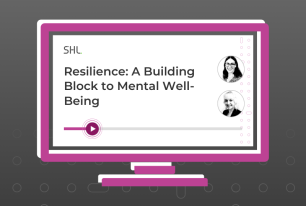Where in the World is Your Hybrid Team? And Does It Even Matter
Imagine a talented hybrid team of professionals, scattered around the globe, working together asynchronously and harmoniously, achieving goals, and finding balance.
Share
A hybrid team comes in all shapes and sizes built from bringing office employees, remote employees, and hybrid employees (office employees that work from home periodically) together and collaborating on work to meet goals. Hybrid teams do not rely on working in silos because it is "just easier that way." Collaboration across disciplines, across regions, across cultures is possible when you can embrace everyone’s unique talents, preferred schedules. We have all learned a great deal about flexibility and understanding over the last two years. It is time to get excited about what a flexible global hybrid team can look like and accomplish when we break down our office-centric workplace ideas and focus on the team instead.
It is 2022 and you can have your hybrid team cake and eat it too.
So, let's jump into why I, personally, love hybrid teams. Guess what? Every person is different, our lives are complicated, and our needs can evolve. Some people thrive in community and office settings, and some, simply, do not. In the early days of the pandemic, we talked about the happy introverts and miserable extroverts working from home, without many nuances. But for many of us, there were reasons why we wanted to go back to the office and why we were uncertain. We all became hopeful and ready for the flexibility the future promised. No longer should we wonder if this acceptance of hybrid office culture is temporary, it has taken years for this acceptance of different working arrangements to become more mainstream and now it’s everywhere.
Before I get into my favorite hybrid team scenarios, I will acknowledge that hybrid teams and non-collocated teams are not without their growing pains. But these are not roadblocks, these are tiny speed bumps and opportunities to solve problems together. It is important to focus on inclusivity in your virtual environments as you build out hybrid teams. Creating virtual environments that cater to the underserved or excluded members of your team will demonstrate the value you place on each team member’s contributions, not just the ones you can see in person, or who have a better internet connection. Creating sessions that cater to less popular time zones tells your team that every voice matters.
But a global hybrid team? Surely, that is not easier.
Global hybrid teams take the hybrid team concept and make everything even more flexible. Gone are the expectations of everyone working and being present during certain core business hours. Instead, imagine that your team can work across a 24-hour period most workdays. Everyone is expected to get their work done in the hours that work best for them, they are accountable to their customers, teammates, and supervisors like anyone else. They coordinate on their tasks and around each other's schedules, but they remain flexible because they must be to reach goals and get their own work done. They can lean on their global teammates for support if a “round-the-clock" urgent response is occasionally needed. They can still enjoy time with family, explore their other interests, take care of personal matters, or just get sleep, without extending their workday.
For a global hybrid team to work well everyone must contribute at the level required of their role, they must communicate with transparency as if they were down the hall or one floor away, and they need to get their work done and meet expectations in the expected time frame. That is all there is to it.
It is important to focus on inclusivity in your virtual environments as you build out hybrid teams.
Here is an imaginary, but totally realistic, day-in-the-life of a flexible global hybrid team.
- Breanna lives in Auckland, New Zealand. There is a local office in Auckland that she likes to work from for part of the day most days, but because she rescues dogs in her free time, she often goes home mid-day to walk her rescues and then finishes her day at home. Despite being on the other side of the world from most of her team, she can collaborate regularly with teammates in North America and India quite easily during her regular business hours.
- Shiv lives in Chennai, India. There is a local office in Chennai that he enjoys working in. He commutes every day, and on Mondays and Wednesdays, he goes in early and finishes up early so he can attend his university class for his Master's degree near the office. This shifted schedule makes synchronous collaboration with Breanna and his teammates in western North America easier. Shiv has just one more year left, three classes, till he completes his Master’s degree.
- Rudy lives in Frankfurt, Germany, he travels a lot. He takes work with him when goes to Singapore to visit his in-laws every Summer. He spends two weeks in Switzerland visiting his family every December. And he and his wife travel whenever and wherever they can across the year. Because of his travel schedule, Rudy works asynchronously with his team most of the time. He does a lot of training videos in his role which he can record, edit, and upload from anywhere in the world.
- Morgan lives in Halifax, Nova Scotia, and skis in Vancouver, British Columbia. Morgan is another traveler, but they split their time between Halifax and Vancouver. From November to April, they head to the other side of the country to ski for the season. But they take work with them and maintain shifted working hours the whole time so they can get on the ski lift every day at 2 pm.
- Nancy lives in Honolulu, Hawaii. Her husband retired and sold his medical practice on March 18, 2020, and shortly after they sold their house outside New York City and moved to Honolulu. Nancy continues to work remotely and manage her global hybrid team from her new “little slice of paradise” as she loves to call her beachside retirement community condo. Every day she finishes work at 4 o’clock to enjoy a cocktail on her balcony before dinner. She plans to retire in a few years, but this new hybrid work-life balance has allowed her to extend this phase of her career a bit longer and she loves "going” to work every day.
A flexible global hybrid team allows every member the opportunities and safety net they need to live their lives, have balance to thrive, and still do their work without the physical and financial tolls that come with conventional office working. When everyone is living their dream global hybrid team life, everyone can feel included in the experience. It takes extra thought to make sure individuals in remote locations and small offices are included in decisions. Technology must be adopted in some creative ways to make colleagues halfway around the world feel like they are sitting right next to each other. Flexible schedules can allow personal and professional priorities to align for each individual. The work can still get done. This is not a utopia, this is a global hybrid team in 2022, and it is here and possible.
Check out our Remote Working resources for more tips on how to succeed in a remote and hybrid workplace!









